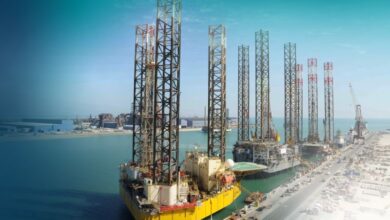Driving sustainability through reporting
IPIECA task force revises guidance to help companies through reporting process
By IPIECA Reporting Task Force; Paul Krishna, ExxonMobil; Bertrand Janus, Total; Olga Gorban, Shell; and Helen Murphy, IPIECA

Oil and gas companies have been among the pioneers of sustainability reporting and have provided leading examples of good reporting practices since the mid-1990s. In this tradition, IPIECA, API and the International Association of Oil and Gas Producers (OGP) have issued the second edition of Oil and Gas Industry Guidance on Voluntary Sustainability Reporting.
Member companies of these organizations recognize that managing sustainability impacts associated with producing fuels and other energy products is an important responsibility. This includes addressing challenges associated with climate change and operating in remote and sensitive areas of the world. The groups also support the industry in addressing these and other sustainability challenges and promote continuous performance improvement on environmental, health and safety, and social and economic topics by developing and sharing good industry practices.
An important practice is sustainability reporting. Clear and consistent reporting helps companies create a solid platform for productive engagement and performance improvement.
Reporting development
An IPIECA Reporting Task Force (RTF), consisting of more than 75 individuals from 20 IPIECA member companies and five trade associations, undertook the task of updating the reporting guidance from 2007 to 2010. The guidance was developed to share good practice across the industry and to encourage companies to keep stakeholders informed about their performance. The guidance was also meant to be the first reference for the companies that do not currently report on their performance but were considering establishing this practice.
The RTF identified important and practical ways to measure sustainability performance in the oil and gas industry. The technical indicators remain central to the revised guidance. The second edition reflects feedback and improvements in reporting practices from many sources within and outside the industry.
A fundamental part of the revision process was the involvement of an external stakeholder panel that advised on both the process and content of the guidance. The panel consisted of leading experts in sustainability reporting practices and represented views of typical report reader groups: business and industry, environmental and community-oriented NGOs, investors and multilateral institutions.
At the onset of the engagement, the panel was asked to assess the quality, credibility and effectiveness of the revision process and to provide ideas for improvement; candid, significant and challenging input was received. A joint statement from the stakeholder panel is included in the guidance.
Why report?
Reporting can bring companies recognizable business benefits. Through communication on its most important sustainability issues, a company’s report becomes a reliable source of information for its stakeholders. By transparently describing its biggest challenges, reporting underpins stakeholder engagement and represents the company’s values in action.
For oil and gas companies, reporting provides a robust platform for describing how strategic issues are being addressed through long-term plans and current initiatives. For example, the report can explain how the company is managing the social and economic impacts or HSE risks of operating in different locations. Once published, this information enables further engagement with stakeholders.
In the longer term, the benefits can provide:
• Enhanced business value as investor confidence grows in response to evidence that the company is managing important risks and positioning itself to take advantage of emerging opportunities;
• Improved operations as employees develop a deeper understanding of a company’s sustainability values, and performance indicators provide insight to support continuous improvement;
• Strengthened relationships as local community leaders, civil society representatives, government officials and regulators, and other key stakeholders learn how the company responsibly manages sustainability issues;
• Enhanced trust and credibility as customers, suppliers and the wider society understand the company’s brand, operations and products; and
• An opportunity for benchmarking among various companies in the oil and gas industry that could potentially affect the choice for partnership during tendering and contractual negotiations.
How to report?
The guidance acknowledges that the industry includes differing types and sizes of multinational and national companies, as well as companies specifically involved in drilling or production, well servicing, oilfield manufacturing or other rig-site services. Most of these companies face specific social and environmental challenges in different locations across the globe, and the guidance recognizes that certain sustainability issues will be more important to some companies than to others.
The guidance places more emphasis in this revision on reporting as an engagement process and encourages companies to determine which issues are most important to their own stakeholders. A range of issues are covered by the indicators, which allows companies a choice on the depth and detail to be communicated. A significant front section on how to report has been included to assist those companies reporting for the first time.
By providing flexibility and consistency, the guidance aims to serve both new and experienced reporters while avoiding the pitfalls of formulaic reporting. To support companies in communicating the issues of most interest to their stakeholders, the second edition contains:
• A six-step reporting process, including a “materiality” step to determine the most important issues for reporting;
• A set of issues and indicators likely to be relevant for reporting by companies within the oil and gas industry; and
• Three levels of reporting elements within each indicator to provide options that enable consistent reporting across the industry: common reporting elements that are well established; supplemental reporting elements that enable greater depth of reporting; and other reporting elements that are less established but emerging.
Reporting process
The guidance is voluntary and does not set minimum requirements or predetermine stakeholder needs. Instead it encourages a consistent “how-to” approach, with companies determining what to report based on a materiality process and stakeholder expectations.
The guidance aims to assist oil and gas companies in developing and enhancing the quality and consistency of their sustainability reports. It is designed for use by any oil and gas company, as well as by companies specifically involved in drilling, well servicing, oilfield manufacturing, or other rig-site services.
The guidance covers the entire spectrum of oil and gas operations, from upstream exploration and production, through downstream refining, transportation and marketing, and also petrochemicals, regardless if a company operates nationally, regionally or internationally.
Promoting sustainability reporting
Many individual oil and gas companies can be commended for the advances that have been made in sustainability reporting within the industry over the past few years. However, the trade-offs that society faces in coming years with regard to the quality of the environment, economic development, standards of living and social justice look to be ever more complex and challenging, as will be societal views on the role played and contributions made by the oil and gas industry.
Sustainability reporting and related stakeholder engagement provide an important forum for individual companies to explore their understanding of the pressing debates, needs for performance improvements on material issues, and plans for meeting future global energy demands in a responsible manner.
It is the goal of IPIECA, API and OGP that the guidance will support the momentum we see within our industry to publish sustainability reports and help reporting companies across the global oil and gas industry to improve the quality and consistency of their reports. The guidance will also provide interested stakeholders with a useful overview of reporting as an industry good practice.
In the first six months of publication, the guidance has received significant industry, external stakeholder,and sustainability media attention, as well as endorsements from industry associations, including the Regional Association of Oil and Gas Companies in Latin America and the Caribbean, the Canadian Petroleum Products Institute and the South African Petroleum Industry Association.
Information about the guidance has been accessed more than 5,000 times online. The document itself has been downloaded more than 2,000 times, and it is increasingly being cited as the reporting basis in oil and gas company sustainability reports and websites.
More information on sustainability reporting within the oil and gas industry is available on IPIECA’s website.
This article is based on a presentation at the IADC Drilling HSE Europe 2011 Conference & Exhibition, 28-29 September, Amsterdam.




